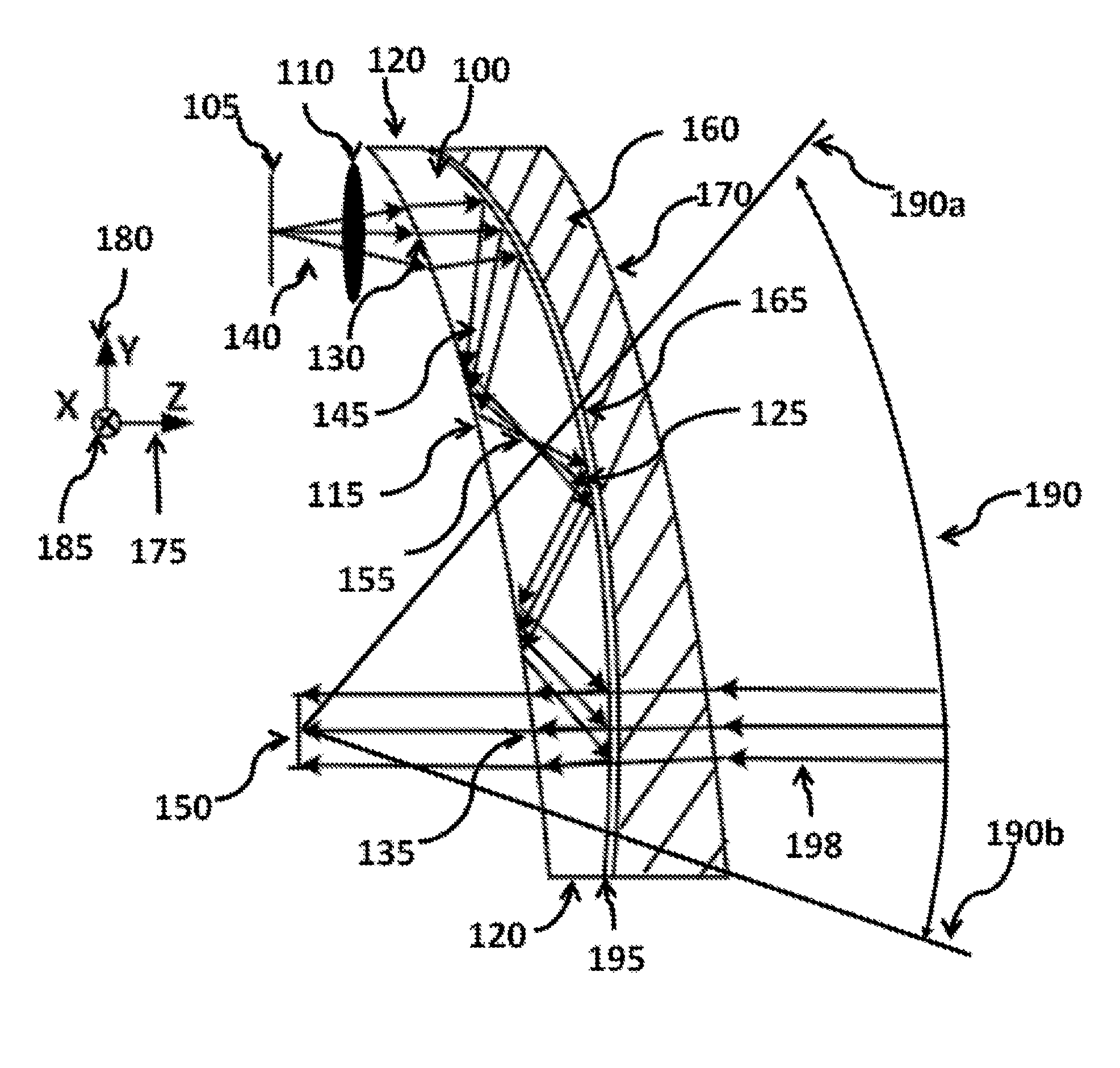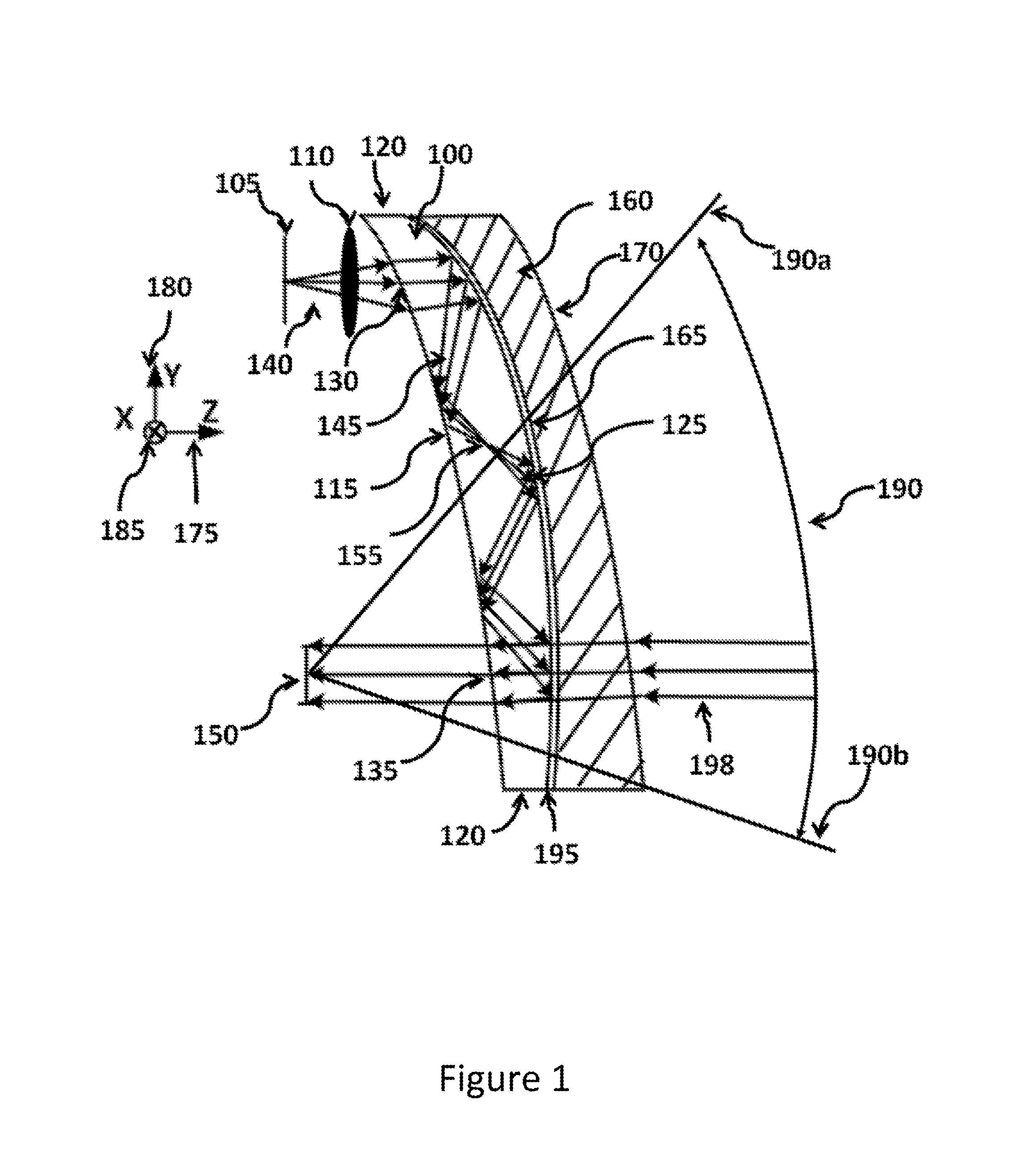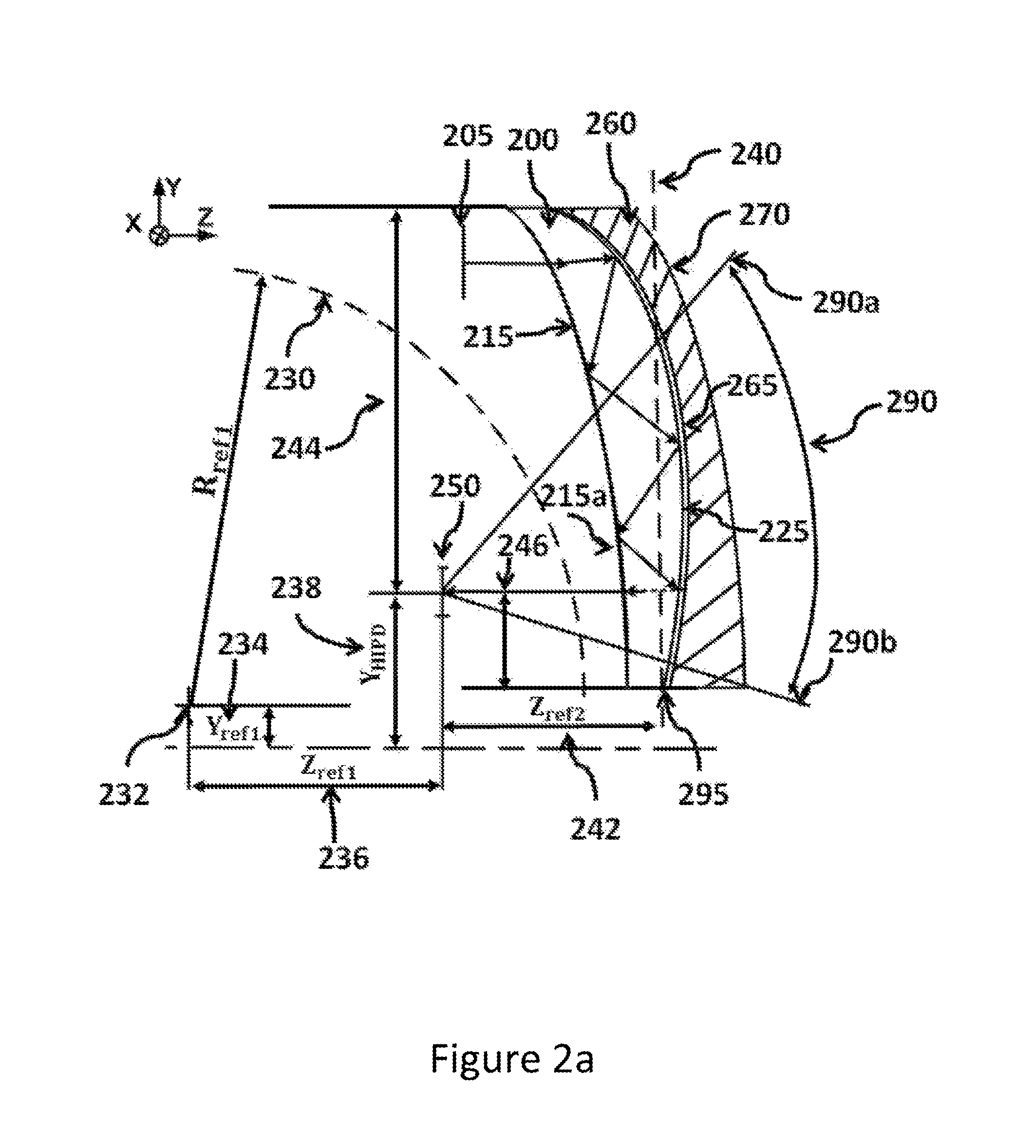Ergonomic head mounted display device and optical system
a display device and optical system technology, applied in the direction of instruments, polarising elements, planar/plate-like light guides, etc., can solve the problems of preventing the acceptance of technology, heavy weight contributes to fatigue and discomfort, and the technology is not widely accepted. achieve the effect of wide see-through field of view and superior optical performan
- Summary
- Abstract
- Description
- Claims
- Application Information
AI Technical Summary
Benefits of technology
Problems solved by technology
Method used
Image
Examples
embodiment 6
[0105]FIG. 15 shows a ray-tracing example of the see-through path for the The overall corrected see-through FOV is 75° in the horizontal direction and 70° in the vertical direction.
[0106]FIG. 16 shows an illustrative OST-HMD design with a 4-base curve appearance according to the embodiment 6 of the present invention. The OST-HMD device contains a pair of optical assembly of the embodiment 6, a frame 1602, and an electronics unit 1604. Each optical assembly contains the freeform waveguide prism 1600, compensation lens 1660, coupling lens 1610, beam splitter 1605c, field lens 1605b, and a micro-display panel 1605a. The electronics unit 1604 inside the two arms of the frame 1602 can be used to integrate the necessary electronics, which include but not limited to, circuit boards for the micro-display unit and display illumination unit, image and video receiving and processing unit, audio input and output unit, graphic processing unit, positioning unit, wireless communication unit, and ...
embodiment 7
[0112]FIG. 22 shows an untrimmed 3D model of the The model contains the waveguide prism, compensation lens, coupling lens, and field lens. The model also includes a beam splitter space to provide room for inserting a beam splitter to introduce an illumination path for a reflective-type micro-display. The model further includes a cover glass for the micro-display.
[0113]FIG. 23 shows an illustrative OST-HMD design with an 8-base curve appearance according to the embodiment 7 of the present invention. The OST-HMD device contains a pair of optical assembly of the embodiment 7, a frame 2302, and an electronics unit 2304. Each optical assembly contains the freeform waveguide prism 2300, compensation lens 2360, coupling lens 2310, field lens 2305b, and a micro-display panel 2305a. The electronics unit 2304 inside the two arms of the frame 2302 can be used to integrate the necessary electronics, which include but not limited to, circuit boards for the micro-display unit and display illumin...
PUM
 Login to View More
Login to View More Abstract
Description
Claims
Application Information
 Login to View More
Login to View More - R&D
- Intellectual Property
- Life Sciences
- Materials
- Tech Scout
- Unparalleled Data Quality
- Higher Quality Content
- 60% Fewer Hallucinations
Browse by: Latest US Patents, China's latest patents, Technical Efficacy Thesaurus, Application Domain, Technology Topic, Popular Technical Reports.
© 2025 PatSnap. All rights reserved.Legal|Privacy policy|Modern Slavery Act Transparency Statement|Sitemap|About US| Contact US: help@patsnap.com



